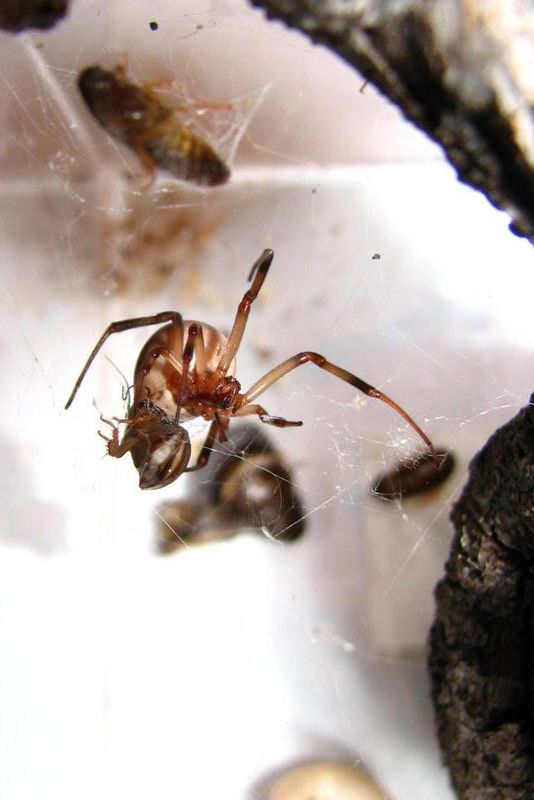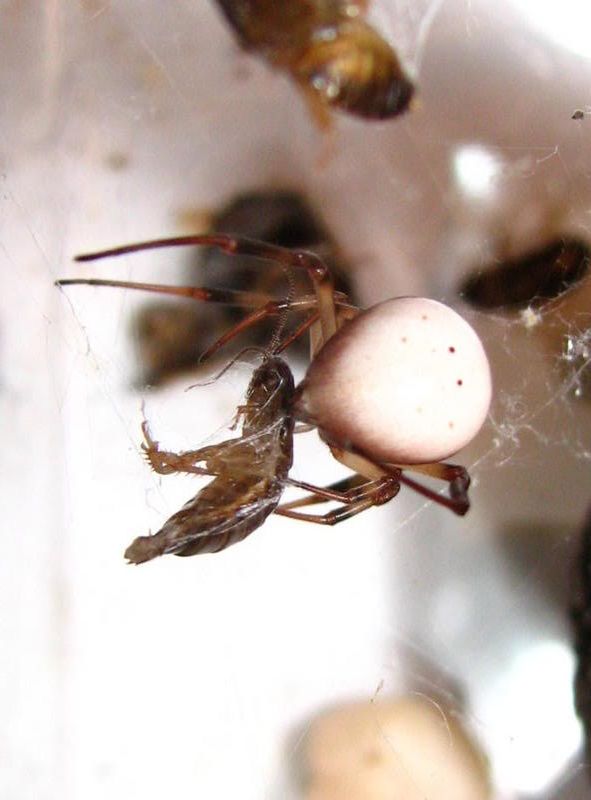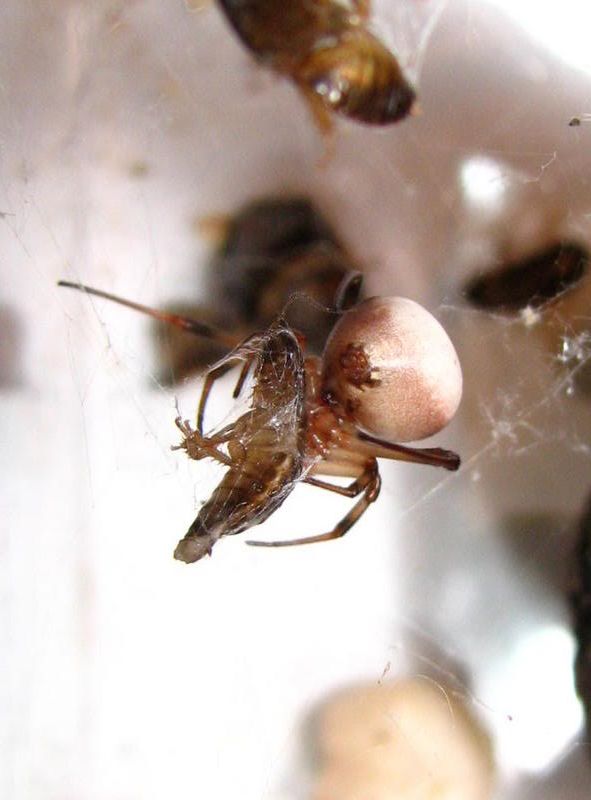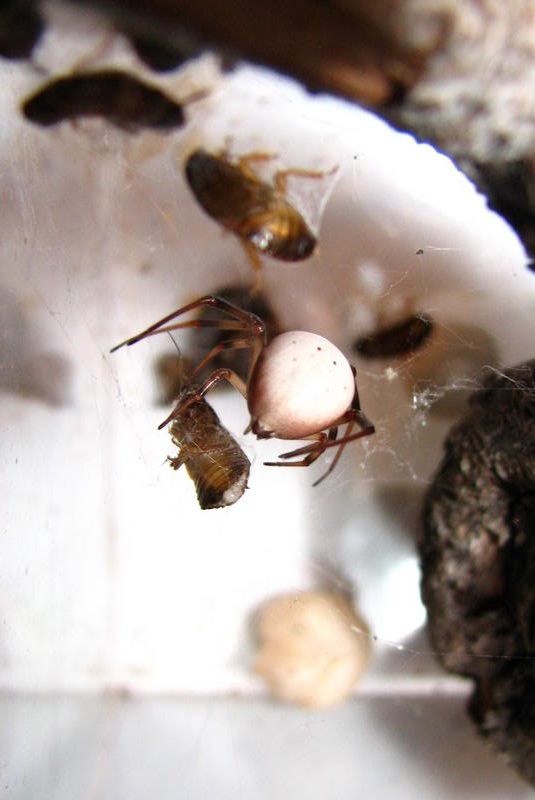- Joined
- Nov 22, 2005
- Messages
- 344
Here's one my subadult/adult (?) female L. pallidus eating a roach: i posted her in the Latro pic thread as well















Hey Bastian,hi, you can´t decide whether a Latrodectus is adult or not just by its size. You have to take a look at the epigynium
true too, but I don´t know how experieced KUJordan is in keeping and breeding Latrodectus sp. or other true spiders. What I wanted to say is that maturity of true spiders can be determined 100% sure by looking at the epigynium. It´s the same as looking at tarantulas from the ventral view to sex them...it´s never 100% sure.Hey Bastian,
I agree with you 100% with regards to looking at the epigynium, but I would still hold that with enough experience, a person could (in most cases) look at a specimen and determine, with relative accuracy, whether or not it is sexually mature based on it's size.
I wouldn´t say so. My eyes aren´t better than those of everybody else, but I was able to see it without any technical help. With the epigynium it´s the same as it is with the epigastral furrow of tarantulas: When they reach maturity the furrow opens up a little bit (at least that´s what I saw).Admittedly, I've never used genital aperture observation as a means of determining sexual maturity for Latrodectus spp. I would think one would need some decent source of magnification to properly do so. Is that assumption correct?
So you are saying that this girl IS an ultimate female and ready to breed? I was not sure when you said, "...I was able to see it w/o any help..." if you were talking about this pallidus I posted. If so, then that's great news and I won't wait to breed her. Let me know. Thanks!I wouldn´t say so. My eyes aren´t better than those of everybody else, but I was able to see it without any technical help. With the epigynium it´s the same as it is with the epigastral furrow of tarantulas: When they reach maturity the furrow opens up a little bit (at least that´s what I saw).




and my girls arnt prudish ...they will be content with sloppy-seconds. Seems that if mac and hesp males can mate a few times, the pal males should be able to also.i will have males if i can successfully mate mine!